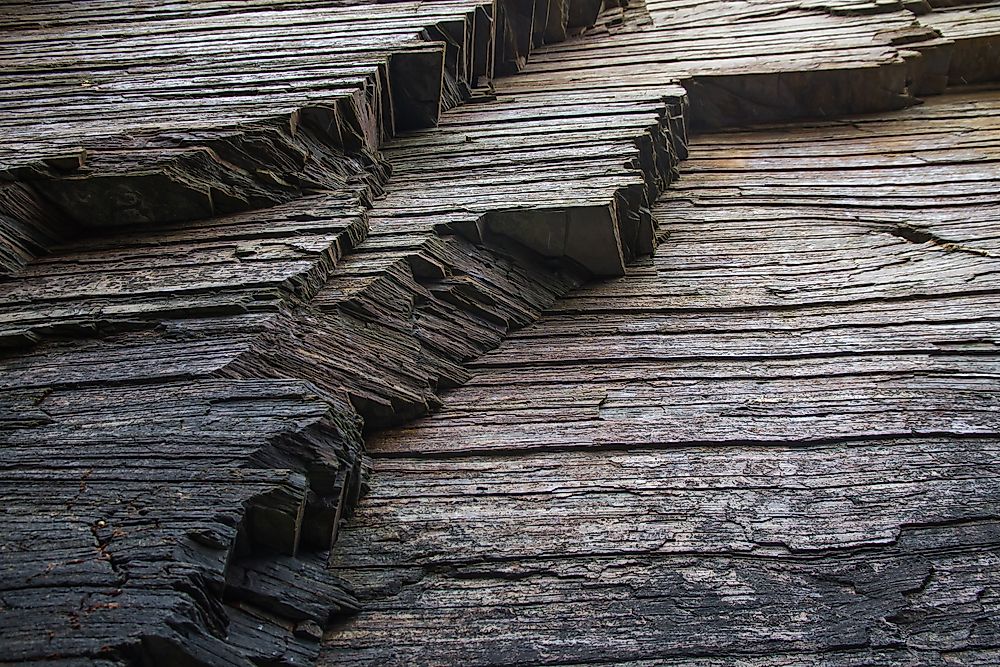What Is Stratigraphy?

The study of stratified rocks is known as stratigraphy. It is a branch of geology that deals with the correlation, interpretation, and description of stratified sediments and rocks that are found on or below the surface of the earth. Stratigraphy is a science that primarily deals with the study of layered sedimentary rocks (called strata) but may also include layered igneous rocks. Layered rocks may result from successive lava flows or from the formation of extrusive igneous rocks. Stratigraphy is an important field of modern archaeology. Since stratigraphy establishes that sedimentation occurs according to uniform principles, it is easier for archaeologists to draw up conclusions. When excavating, techniques used are based on the principles of stratigraphy.
Laws of Stratigraphy
The laws of stratigraphy were pioneered by Danish geologist, Nicholas Steno, who is also considered the father of stratigraphy. Steno established, through observation, that rock layers may not be chaotic as they seem. He concluded that rock layers (strata) are deposited with the upper layers being younger and the lower layers older. This, therefore, informs that rock layers indicate a chronological history of the earth and its past life. Stratigraphic records also preserve major geological events and details pertaining to orogenies (mountain-building), climatic fluctuation, and eustatically-driven sequences.
As a result, Steno came up with three fundamental principles of stratigraphy, commonly known as Steno’s laws.
Law of Original Horizontality
Due to gravitational settling, layers of sediment deposits are arranged in a horizontal manner. On tilted surfaces, the bed of sediments will tend to take a horizontal position while corresponding to the contours of the basin or depression. At the time of deposition, sedimentary layers assume a horizontal inclination. However, external forces may lead to deformation. The common types of deformation of horizontal layers include folding and faulting.
Law of Superposition
Oldest layers are found at the bottom and youngest layers at the top in undisturbed strata.
Law of Lateral Continuity
This principle establishes that horizontal layers stretch laterally until they thin to a negligible thickness at the edge of their basin of deposition.
Potential Pitfalls in Stratigraphy
To accurately study rock layers deposited on the earth, the strata must be undisturbed and unadulterated. There is plenty of room for error when undertaking this kind of study. There are many challenges and pitfalls that the geologist can encounter in the study of sedimentary deposits.
First, layers can be less than an inch deep and some can be many feet deep. It is on the geologist to use accurate judgment to determine whether erosion and other geological forces have affected the stratum. In a case where erosion has occurred, it may be difficult to come up with an accurate stratigraphic record due to disturbance and unconformity. As such the study may be rendered inaccurate.
The stratigraphic record may be difficult to read in the case where an earthquake disturbance has taken place. Under such circumstances, part of the earth’s crust may shift over an adjacent section. The geologist will find it difficult to establish neat lines that define the stratum. Additionally, the change in thickness of stratum extends towards the edges where it merges with other deposits.
Geologists also face a major pitfall when it comes to establishing the age of the strata using radiometric dating. The problem arises when attempting to find the absolute age of materials from which the strata are formed. A sample taken from the stratum may indicate the age and period of the parent rock instead of the sample itself. For example, grains of sand that constitute a sandstone are older than the larger piece of sandstone. Radiometric reading will indicate the age of the grain sands as opposed to the unit of sandstone. This provides a unique challenge to overcome.
Importance of Stratigraphy
Stratigraphy deals with different periods of geological past by revealing their details from the beginning to the present period. It is, therefore, an important field in explain various environmental effects and how they shaped our present.
Stratigraphy enables us to understand the details of geography, climate, glaciations, orogeny, epeirogeny, and how the various factors affected the evolution and migration of plants and animals.
Through stratigraphic analyses, scientists and geologists are provided with valuable clues about the age of the earth and its history. These findings are used in a myriad of other scientific fields and disciplines ranging from city planners, prospecting geologists, petrologists, and engineers.
Archaeologists and paleontologist rely on stratigraphy to provide context to their findings during the excavation process. They can accurately determine the history of various animals dating back to historical and pre-historical periods.











